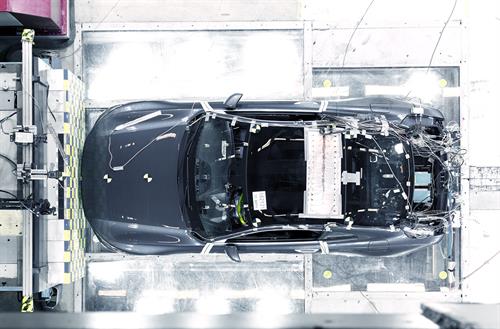Crash Tests Prove Carbon Fiber’s Strength, Volvo Says
Most of the energy was absorbed by the car’s crash structure. The remaining energy was mitigated by the carbon fiber body panels into the body structure, which remained rigid and showed no signs of bending or misalignment after the crash.
November 8, 2018

Polestar, Volvo Cars’ stand-alone electrified-vehicle brand, says carbon fiber performed successfully in initial crash tests of the Polestar 1 prototype.
In contrast to a steel body, where bending helps the integrated crumple zones reduce the amount of crash energy reaching the vehicle’s occupants, carbon fiber dissipates energy by cracking and shattering. The polymer body of the Polestar 1 is reinforced with carbon fiber.
The Polestar 1 verification prototype, a plug-in hybrid, was propelled into a stationary barrier at 35 mph (56 km/h), simulating a frontal collision, Volvo Cars says in a news release. Most of the energy was absorbed by the car’s crash structure. The remaining energy was mitigated by the carbon-fiber body panels into the body structure, which remained rigid and showed no signs of bending or misalignment after the crash.
“The outcome of this first crash test validates the decision to build the body of Polestar 1 in carbon fiber. It also confirms that carbon fiber supports the highest safety standards,” says Zef van der Putten, Polestar’s carbon-fiber specialist.
“We were really excited about this crash test. The first crash test of Polestar 1 has been about exploring the unknown,” adds Polestar CEO Thomas Ingenlath. “This was a crucial proof point in the development of Polestar 1; we had to know that the ideas and calculations that have gone into building this car were right – and they were.”
You May Also Like